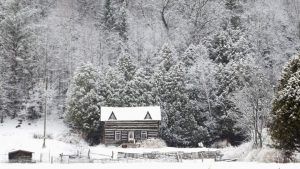Jonathan Liebson in The Atlantic:

On December 21, 1968, writing in the Winnipeg Free Press, the reviewer William Morgan starts out admiring of Alice Munro’s debut story collection. He says that the author, in her fictitious small towns, creates a “strange mixture of physical freedom and emotional claustrophobia.” By the end of that review, however, those same features will come to annoy him. Morgan laments that the “characters and situations are real enough, and yet [they’re] enough the same that an unwanted familiarity seems to develop; they were closing in, making one want to escape.”
What Morgan takes issue with in the collection, others may see as a virtue. Fifty years ago, Dance of the Happy Shades won the Governor General’s Award for Fiction, one of Canada’s most important literary awards (an honor that Munro received twice more on her way to winning a Nobel Prize, in 2013). Compared with the long, stand-alone stories that later became Munro’s trademark, the stories from Shades are leaner in page count, more plot-driven, and more conventional in narrative structure; they also have an essential co-dependency. Like James Joyce’s Dubliners or Sherwood Anderson’s Winesburg, Ohio, the book coalesces around a sense of place—rural southwestern Ontario—as much as it does around overlapping themes. In a setting where many homes lack electricity or running water, many men still make a living off the land, and many housewives must jar their own preserves, Munro’s female protagonists often confront expectations that seem as old, and firmly rooted, as the landscape itself.
More here.
